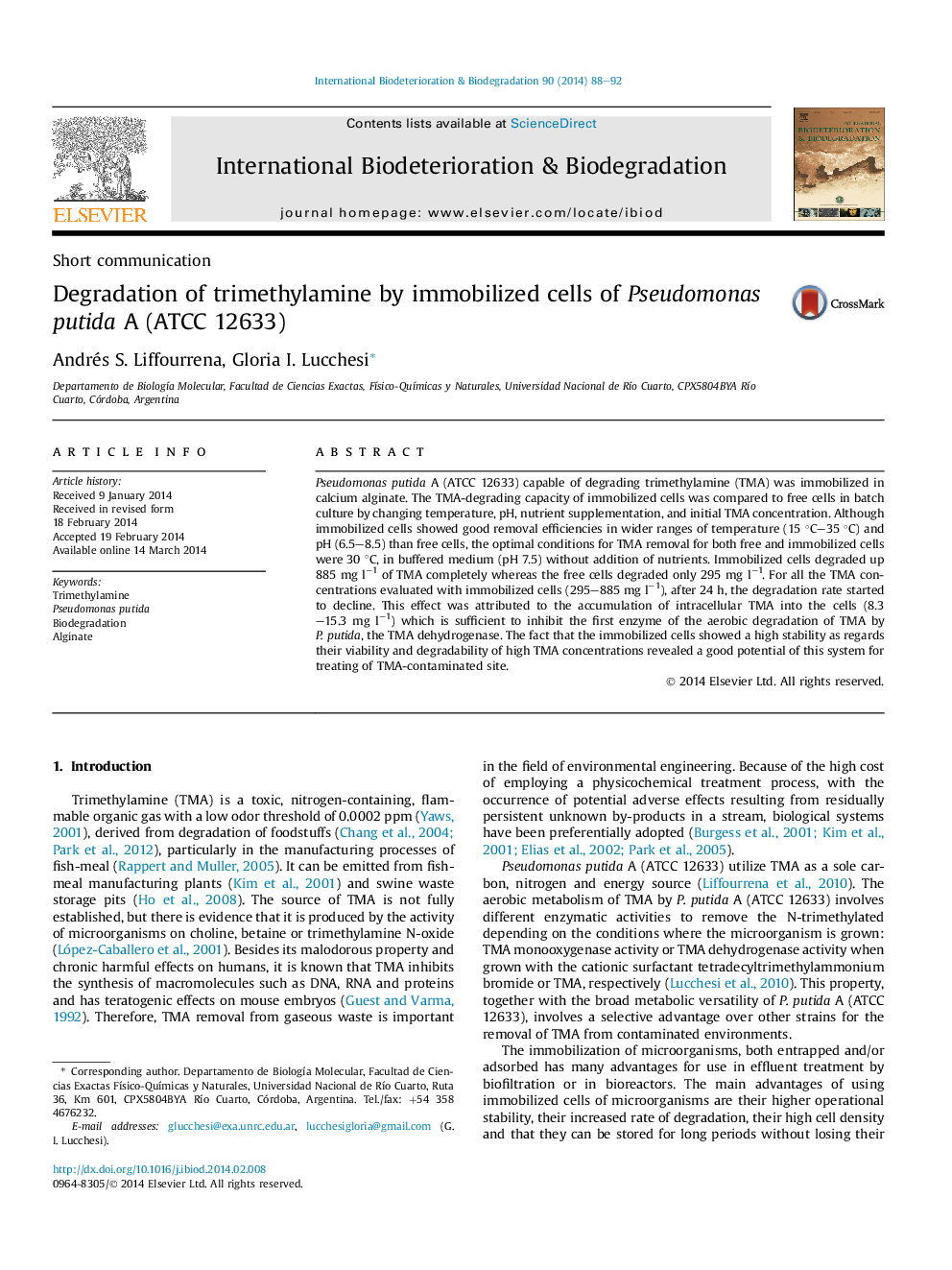| Article ID | Journal | Published Year | Pages | File Type |
|---|---|---|---|---|
| 4364790 | International Biodeterioration & Biodegradation | 2014 | 5 Pages |
•Degradation of TMA by free and alginate-entrapped cells of Pseudomonas putida.•Immobilized cells show good removal efficiencies between 15°C and 35 °C and pH 6.5–8.5.•Free cells showed good performance only at pH 7.5 and 30 °C.•Immobilized cells degrade 885 mg l−1 whereas the free cells degraded 295 mg l−1.•Accumulation of TMA into the cells inhibited the TMA dehydrogenase activity.
Pseudomonas putida A (ATCC 12633) capable of degrading trimethylamine (TMA) was immobilized in calcium alginate. The TMA-degrading capacity of immobilized cells was compared to free cells in batch culture by changing temperature, pH, nutrient supplementation, and initial TMA concentration. Although immobilized cells showed good removal efficiencies in wider ranges of temperature (15 °C–35 °C) and pH (6.5–8.5) than free cells, the optimal conditions for TMA removal for both free and immobilized cells were 30 °C, in buffered medium (pH 7.5) without addition of nutrients. Immobilized cells degraded up 885 mg l−1 of TMA completely whereas the free cells degraded only 295 mg l−1. For all the TMA concentrations evaluated with immobilized cells (295–885 mg l−1), after 24 h, the degradation rate started to decline. This effect was attributed to the accumulation of intracellular TMA into the cells (8.3–15.3 mg l−1) which is sufficient to inhibit the first enzyme of the aerobic degradation of TMA by P. putida, the TMA dehydrogenase. The fact that the immobilized cells showed a high stability as regards their viability and degradability of high TMA concentrations revealed a good potential of this system for treating of TMA-contaminated site.
